Extraction of minerals on the seabed has major implications and unforeseen environmental consequences. At the same time, it is a signal of a worldwide consumption that is out of control and where one will now use the absolute last redoubt in our hunt for the earth's last resources. Most of the world's ocean areas are still uncharted, and the risk of irreparable damage to our marine marine environment is greater than ever. The case was put out for hearing with a deadline of 27.01.2023.
The Norwegian Environment Protection Association sent today our consultation input where we are strongly critical of the opening of mining operations on the seabed, and where we instead ask Norway to take the initiative for an international ban.
The precautionary principle must be the absolute and unabridged basis for all handling of the management of the sea areas and its resources. This is also the guiding principle behind it The UN's Sustainable Development Goals in its entirety, but also specifically Sub-goal 14 – Life in the sea. The sustainability goals are not something we can choose to ignore as it suits us, but are a signed and ratified work plan that binds the nations of the world, including Norway.
The elections Norway is now making will not only have implications for the sea areas we ourselves manage, but will also have worldwide consequences. For a number of years, Norway has been at the forefront of promoting international environmental standards and securing the world's climate goals. Many countries look to Norway when deciding their own policies. If Norway opens up the extraction of seabed minerals, one could easily end up in a situation where other countries with more questionable environmental standards start mining on the seabed with far-reaching and irreparable consequences.
If Norway itself has opened for extraction, we lose our unique position to ensure sustainable and environmentally friendly solutions elsewhere. If we try to impose guidelines on others, it is easy to imagine the obvious answer; "but you do it yourself". This is not a situation Norway wants to find itself in. We need a nation that can be a leader, and that can set international environmental requirements that ensure the marine areas' continued survival and health.
International moratorium on extraction
Instead of opening the way for an extraction of which we absolutely do not know the consequences, Norway should rather be the nation that held back and showed responsibility. The NMF will therefore propose that Norway as a nation take the initiative for an international moratorium that prohibits the extraction of seabed minerals within a given time horizon, at least until 2030.
- The Norwegian Environmental Protection Association sent today our consultation input in which we are strongly critical of the opening of mining operations on the seabed, and in which we instead ask Norway to take the initiative for an international ban.
- International moratorium on extraction
- The consultation report and impact assessments
- The investigation area affects the national park and nature reserve
- Norwegian shelf already charged
- Extraction of seabed minerals is absolutely the last resort
- Reuse of materials can also solve a pollution problem
- Better utilization of resources by utilizing minerals that have already been mined
- The need for minerals and metals
- Energy and minerals – two sides of the same coin
- The responsibility for safeguarding water quality also in our marine areas
- The sea is our most important food dish
- Summary and conclusion
- International moratorium on extraction
- Download:
The consultation report and impact assessments
It exists the hearing presented several impact assessments from the Directorate of Fisheries, the Polar Institute, the Institute of Marine Research and others. Common to all of these is that none of them know the total consequences or the exact methods or standards by which mining will be carried out. In that respect, it is a very weak basis for allowing the opening of something that can have large, far-reaching and irreversible consequences. The precautionary principle must be absolute before a decision with such scope and consequences can be considered open. We are certainly not there at this point, nor will we be able to be there for the foreseeable future.
Taken from the preface on page 3 i The consultation document, cited;
Today, there is a strong geographical concentration of the extraction and processing of important minerals globally. Such concentration is potentially an obstacle to reliable and secure access to key input factors for all countries. There is great and growing attention to this in Europe, the USA and the rest of the world. Commercial extraction of minerals from Norway's seabed can help remedy this in the long term.
NMF reacts to that situation which is characterized by geopolitical considerations and the balance of power, i.e. where land resources are located globally today and that it is important to balance this out by having our own production. An image is almost being formed that other regions will not share their resources with Norway or our part of the world, and that this will consequently form the basis for Norway's need to take a closer look at its own continental shelf. This argument is not politically tenable. Norway is a small player globally and cannot without further ado take on the role of lifebuoy for the West on minerals, which we have tried to do on so-called green energy with the government's plans for offshore wind and hydrogen, plans NMF believes are completely irresponsible to implement.

NMF means the Impact Assessments (KU) is characterized by not enough concrete examples of extraction in relation to manganese crusts or sulphides, we then think of methods, types of equipment, logistics. Nor is it more than discretionary assessments that are used as a basis in relation to environmental impact. KU is characterized by a great lack of exact knowledge and the question is whether the Norwegian authorities will spend a lot of money and resources on making this more concrete now. NMF believes that the prioritization is wrong and to the extent that there is a need for metals, NMF also believes that one must recover as much as possible of what is in the cycle nationally and globally. On copper alone, the amount that can be collected in Norway each year from discarded materials is the same as what would be produced at a copper mine in Repparfjorden (Figures from waste industry 2018) NMF believes that all stones should be turned over in terms of access and need for metals before moving on on the Norwegian continental shelf.
Norway as part of Europe and the world will also not be a large consumer of the minerals as the use of these as input in products for the global market must take place close to this large market for the next generations, i.e. in Asia, possibly North America. At the same time that Norway is a small player in the larger context, it is also important to be aware of the role Norway has as a leading country in key environmental issues globally. If Norway allows this type of mining activity in our own country, we will simultaneously lose our position to work forward and set environmental standards elsewhere in the world. And with many nations' dubious environmental standards, it can quickly go downhill with the production capacity of the sea areas because we did not take sufficient consideration when we had the opportunity.
The investigation area affects the national park and nature reserve
The map showing the study area p 31 also shows that the Jan Mayen area and Svalbard are within it. The territory of both these island communities is protected as a national park and nature reserve with associated restrictions on encroachment and environmental impact. This is another argument against proceeding with exploration/mapping.
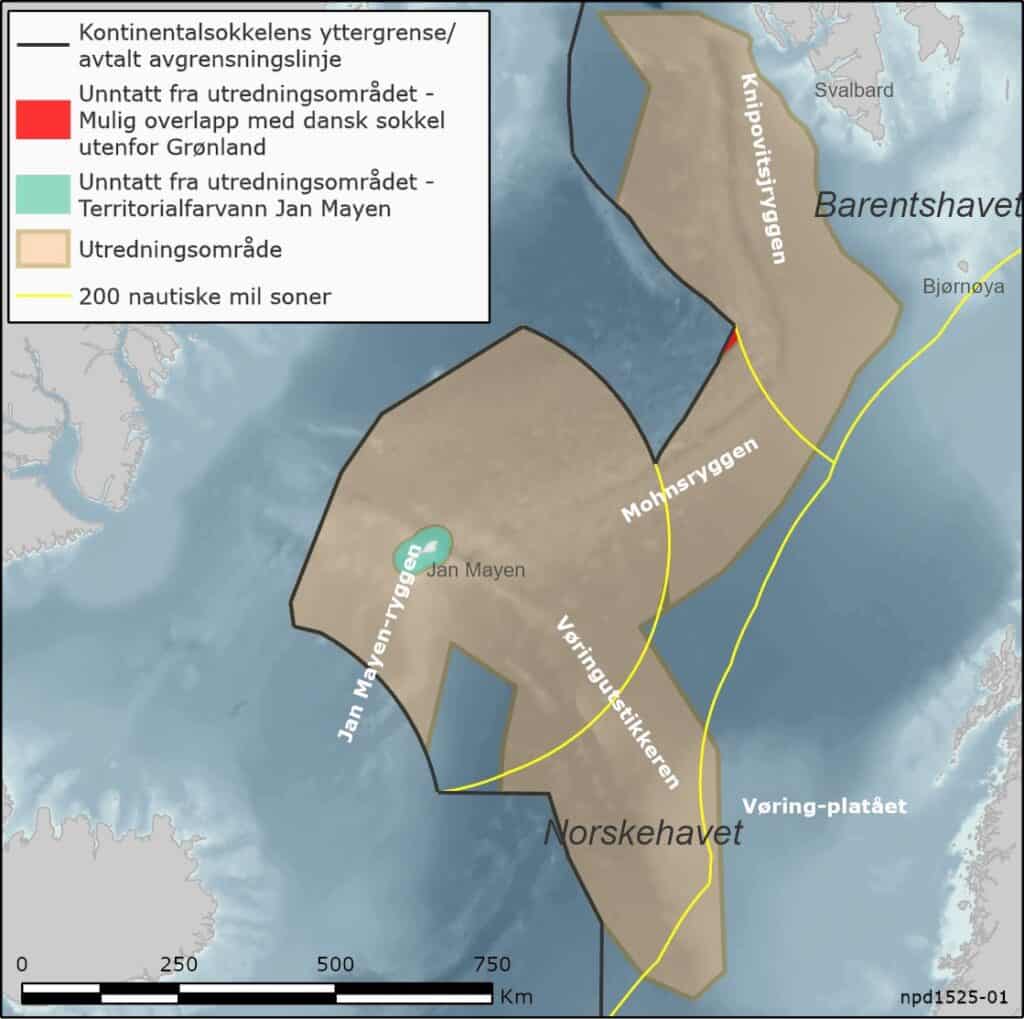
4 section page 20 of KU:
NMF reacts to the wording in this section; quotation;
When it comes to pollution, one of the goals is that activities in the marine areas should not contribute to elevated levels of pollutants, and that emissions and use of chemicals that pose a serious threat to the environment should be continuously reduced with the goal of stopping the emissions.
NMF understands the content of the section as an opening to pollute in the first instance and then gradually reduce the pollution. The NMF generally believes that intervention in 2023 must take place without so-called "red" solutions on a general basis and believes, regardless of the outcome of this consultation, that if exploration/investigation is to be carried out, the total environmental impact must not immediately increase but be stable and gradually decrease.
Norwegian shelf already charged
Large parts of the Norwegian continental shelf has since 50 years ago been burdened with oil and gas extraction which has left its mark. We know that today there are an unknown number of millions of m3 drill cuttings on the base that have not been removed. Furthermore, interventions have been made in relation to the fact that large numbers of pipelines have been added to existing production units from Ekofisk to the Barents Sea. NMF sees that breeders also want to use more offshore solutions, as does, for example, the wind industry.
NMF means the Norwegian continental shelf and Norwegian sea areas is under strong pressure now that our management goes far beyond what can be considered prudent. The ocean is little explored and we know far too little today to allow further intervention. The precautionary principle must be absolute before a decision can be made that involves such a great risk and degree of severity as this.
Extraction of seabed minerals is absolutely the last resort
The great thirst for minerals and resources has not slowed down in recent years. Instead, consumption has increased exponentially and uncontrollably. We must rather try to do something about the real problem, rather than create new and even bigger problems to cover up the problem instead of solving it.
Another thing that illustrates the potential problems with mining on the seabed is that we as humans are also unable to handle mining on land without causing major environmental damage, with pollution and toxic runoff, or where we handle all the mine sludge. The environmental nation Norway has chosen to use viable and valuable fjords as rubbish bins. Will must use nature and the environment, not consume and consume absolutely everything we come across. Unfortunately, we don't have a new globe to jump to when this one is used up. Our longing and thirst for the last minerals must be solved in other ways.
One thing is to find ways to reduce the total consumption, preferably by finding smarter solutions and better utilization. We need to get much better at recycling and the circular economy. Can we reduce consumption by repairing and recycling instead of throwing away and making new, with the ensuing rush for more resources? These are questions we have to ask ourselves before we tackle the absolute last resources on the seabed.

Can there be other sources of the minerals we need..?
Reuse of materials can also solve a pollution problem
We humans have through an imagined state of abundance acquired us a use-and-throw attitude where it has been easier and more profitable to throw away and make new than to take care of the resources. In several areas, we have therefore, over a long series of decades, already thrown away valuable materials that could have been utilized much better.
Better utilization of resources by utilizing minerals that have already been mined
There is great potential in the recovery and reuse of materials from old landfills, landfills and dumping grounds from the defence. In addition to contributing to better utilization of resources to cover today's and tomorrow's needs, it will also potentially solve major unmanageable environmental problems. Old sins are cleaned up and good resources are utilized.
Many of those mines who have been operating throughout the last hundred years have only been looking for one thing. Often, the rocks that have been driven out contain a range of different minerals that have been left behind in the mining waste. If you have operated a copper mine, you have only focused on the copper and extracted it. Old mining waste can be a significant resource that is much more readily available than driving new material from the rock. It is important to map which deposits are in already extracted mine material. It makes little sense to continually mine new deposits when we already have several readily available already. The profitability of residual minerals can also be significantly different in today's market than they were when the main substance was extracted. Resource utilization is more important than new environmentally damaging interventions. Another factor is that easily accessible minerals can often be extracted with significantly lower climate costs than corresponding new mining operations.
The need for minerals and metals
Much of it strongly growing and uncontrolled the need for minerals and resources is the desire for a change that will take care of the climate. Much of this need is again a result of there being neither restraint nor consideration for consumption. It may seem that all consumption is necessary and that we constantly have to extract more resources to cover unrestrained consumption. Consumption requires more energy, and more energy requires greater consumption and more resources. These are both mechanisms that reinforce each other in an endless spiral that sooner or later stops by itself. It is certainly not in such a situation that we wish we ever had to come, but unfortunately it does not look like there is anyone who asks these questions at all.
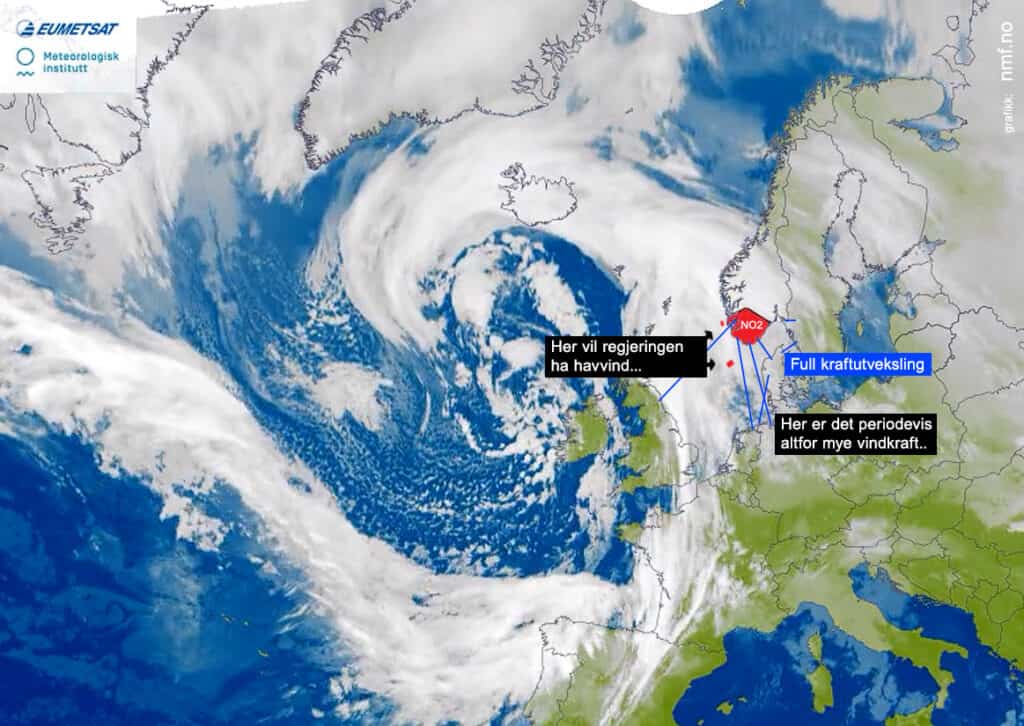
As for the conversion then it is also invested in completely the wrong end, where the most resource-demanding installations also have the most negative footprint in relation to land use, consequences for natural diversity and the environment etc., and then this technology is not even able to supply us with consistent or predictable energy. Europe and several other countries have already phased in far too much of this technology that they actually have to pay wind power plants in Denmark and Germany amounts in the hundreds of millions of dollars so that they do not have to produce when it is windy. And yet it is precisely this technology that binds up the most minerals and metals per unit, and also requires a large and resource-intensive infrastructure to be able to produce. This is not sustainable from either a resource or a climate point of view. When something is redundant, all extra units will be a direct loss item on the bottom line for both resource consumption and climate emissions. It costs a lot of energy to extract and manufacture all these materials, which will also not be able to be covered as long as there is excess capacity. Unnecessity is waste.
Energy and minerals – two sides of the same coin
In a shift that will contribute to a better world is absolutely essential that we reduce waste and unnecessary consumption as much as possible. Secondly, it is important to choose the best solutions that also have the smallest footprint and lowest environmental consequences. Energy and resource requirements go hand in hand. When the need for one increases, the need for the other also increases at the same time. Resources cost energy, and energy costs resources. In order to have a much more sensible energy and resource policy, it is important to get control of both. Waste and poor utilization are among the most important drivers in this escalating spiral where we have lost control over both areas.
On the energy side must we, in addition to ENØK and better use and utilization of energy, also invest most in the best energy sources that can give us both stable and predictable energy, and not least that also have the smallest footprint. Here, as a world-leading nation in technology and expertise from the North Sea, we have a unique opportunity to develop the energy systems of the future in geothermal energy production, geothermal energy, fjord heat, upgrading for better utilization of existing hydropower plants, upgrading the shelf by gas turbines and infrastructure., ENØK and better use of energy already in use. These are all solutions that will contribute to reduced resource consumption, and which in turn will be able to reduce the need for the extraction of minerals on the seabed, which have the absolute greatest environmental consequences. Simple logic and common sense.
- The Norwegian Environmental Protection Association sent today our consultation input in which we are strongly critical of the opening of mining operations on the seabed, and in which we instead ask Norway to take the initiative for an international ban.
- International moratorium on extraction
- The consultation report and impact assessments
- The investigation area affects the national park and nature reserve
- Norwegian shelf already charged
- Extraction of seabed minerals is absolutely the last resort
- Reuse of materials can also solve a pollution problem
- Better utilization of resources by utilizing minerals that have already been mined
- The need for minerals and metals
- Energy and minerals – two sides of the same coin
- The responsibility for safeguarding water quality also in our marine areas
- The sea is our most important food dish
- Summary and conclusion
- International moratorium on extraction
- Download:
The responsibility for safeguarding water quality also in our marine areas
The water quality has everything to say for the environmental condition and production capacity in our marine sea areas. All mining is associated with major problems with the spread of volatile fine sediments and environmental toxins into bodies of water. In addition to the fact that the particles themselves pose a major problem for all organisms that have to filter water or breathe, all such fine sediments contain different compositions of minerals. For mining here on land, we are not even able to deal with these issues without causing major negative and far-reaching environmental consequences. You don't even have to move outside the national borders to find terrible examples of this.
Most of us remember enough The Titania case, where the entire Jøssingsfjord in the very south of Rogaland was filled up with fine sediments, is a so-called sea landfill. More than 35 years since the mine dumping ended, the original life has still not returned to the fjord. In recent years, we have had very conflict-filled cases in, for example, the Repparfjorden and the Førdefjorden, where mining operations have to use rich and viable fjords as rubbish bins. Quarries where only crushed stone and stone are taken out also have major environmental problems that push the bodies of water into fjord systems.

An illustrative example of this is Norwegian Stone AS in Suldal, Rogaland. This is owned by the mighty Heidelberg Materials group (Tidl HeidelbergCement), the world's largest group in cement, crushed stone and aggregates. The company is very concerned about environmental standards internationally "Sustainability", «Environment and Climate», "Social Responsibility", «ESG Documents and Policies», "Governance and Compliance", etc., and they also have their own environmental award for the best environmental measures in their quarries; "Quarry Life Award". Still, this company has slammed down a large area of Sandsfjorden, classified as a national salmon fjord over a long period of years. Suldalslågen, which is one of the country's largest and most productive salmon rivers located just inside.
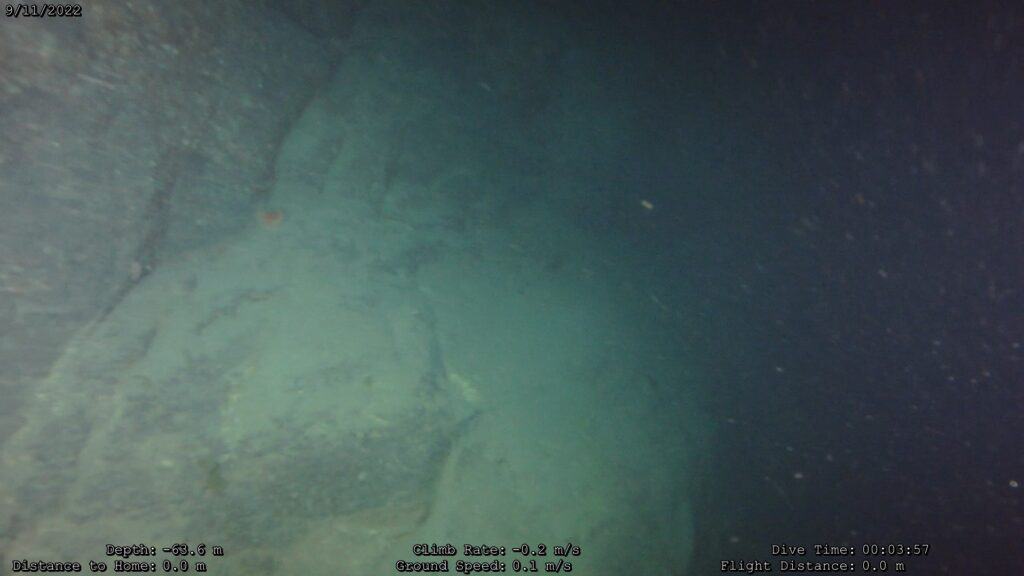
Over a long period of time this company has released fine sediments into the fjord, and the result is disappointing. Diver Erling Svensen has documented heavy sedimentation over a large area, and the Norwegian Environmental Protection Association has later confirmed this down to a depth of less than 90 meters in several places with ROVs. It is disheartening to see how poor the environmental standards are at such a group, despite the fact that on their websites and in annual reports, etc., they emphasize that they are so good at the environment.
When practice shows the complete opposite, this is also a sign that the extraction of seabed minerals by mining on the seabed is not compatible with an environmental goal that must safeguard water quality and important ecosystem services. When a world-leading group, which also attaches great importance to environmental goals and Environmental Social Governance (ESG) have no higher environmental standards in their Norwegian subsidiaries than dumping large and important natural values in a national salmon fjord, there is little hope that any other companies or companies will act more responsibly when the business is to take place even further out of sight and control. If we can't handle this type of business on the surface, we certainly won't be able to do it many hundreds or thousands of meters below sea level and miles from the nearest coast.
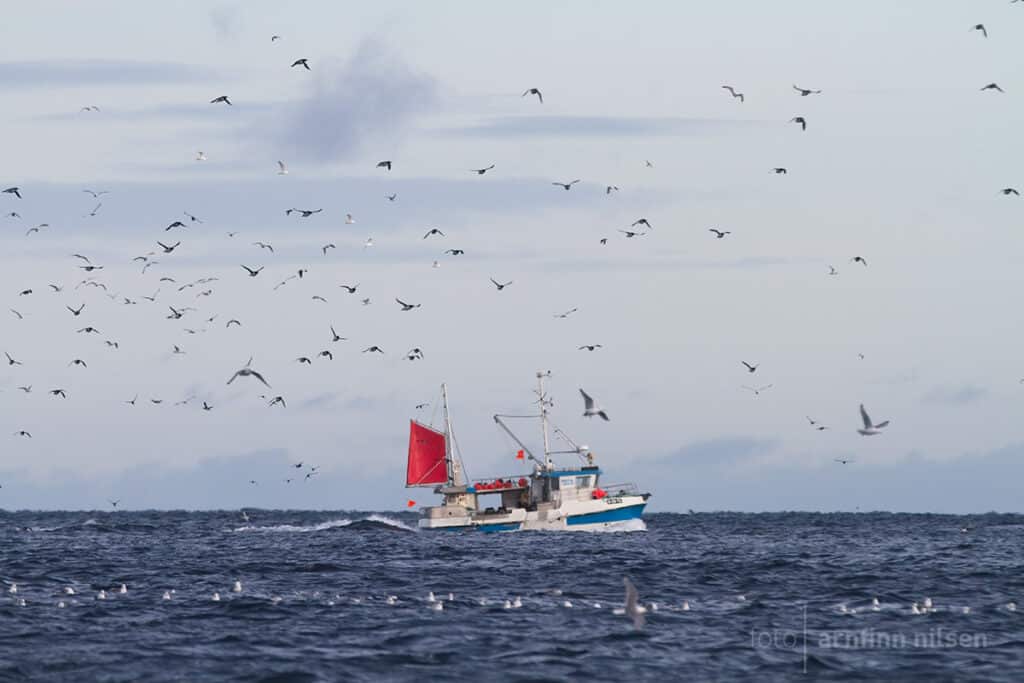
The sea is our most important food dish
We live in a situation where there is greater uncertainty in relation to food and supplies. Norway is well over half dependent on imports for all the food we eat. At the same time, the current situation with conflict and sanctions against Russia has also created a new crisis where large parts of the world's crops no longer receive much-needed fertilizer from Russia. This will have knock-on effects with reduced yields in a large number of the countries from which we get much of our food. Ripple effects that can result in reduced yields worldwide for several years to come. This means that the pressure on the marine environment as a food container will be greatly increased.
Where will we get our food from, if the sea also fails? This is precisely what we risk if we also open up the sea areas for mining? We can eat fish, shellfish and clams, but we cannot eat copper and cobalt. Nor does the money give us food if there is a shortage in the world. The world's population is not exactly getting smaller as the years go by, rather the opposite. And everyone is addicted to food.
If our food is not the first priority of our governing authorities, there is something seriously wrong with the priorities. We cannot handle mining on land without damaging and polluting the environment, so how are we going to manage this underwater, miles off the nearest coastline - out of sight and out of control?
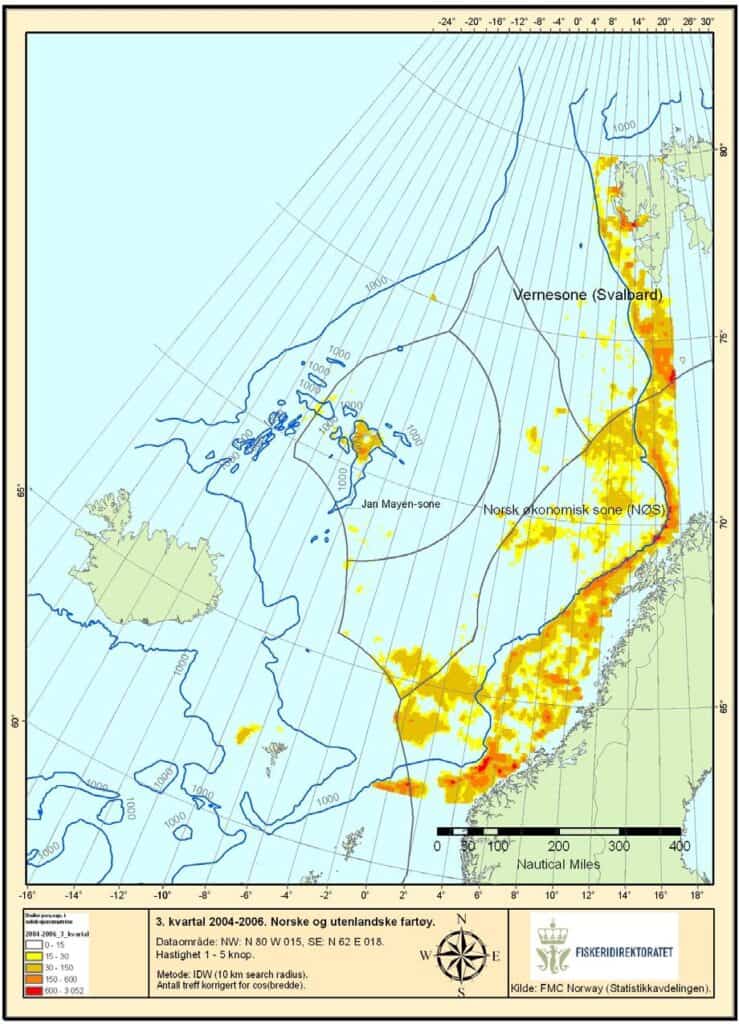
As the map from KU shows (one of four maps/seasons) the sea areas Norway manages are among the largest and most productive in the world. The map is an example, but we also point out that there are also several map layers that show other fisheries and fish species.
It is not the case that there are "free" sea areas. All areas are important for the entire marine ecosystem. Norway has a southern responsibility to ensure continued sustainability and production capacity. The endurance limit for many of the important ecosystem services has already been pushed to the breaking point. Reduced production capacity in the sea will be a disaster. Not just for us here in Norway, but also for the entire world's overall food supply. In these times, we absolutely cannot afford to put this at risk in order to attract strong capital interests in their eternal pursuit of profit. Norway, as an enlightened and responsible nation, must make a clear choice here.
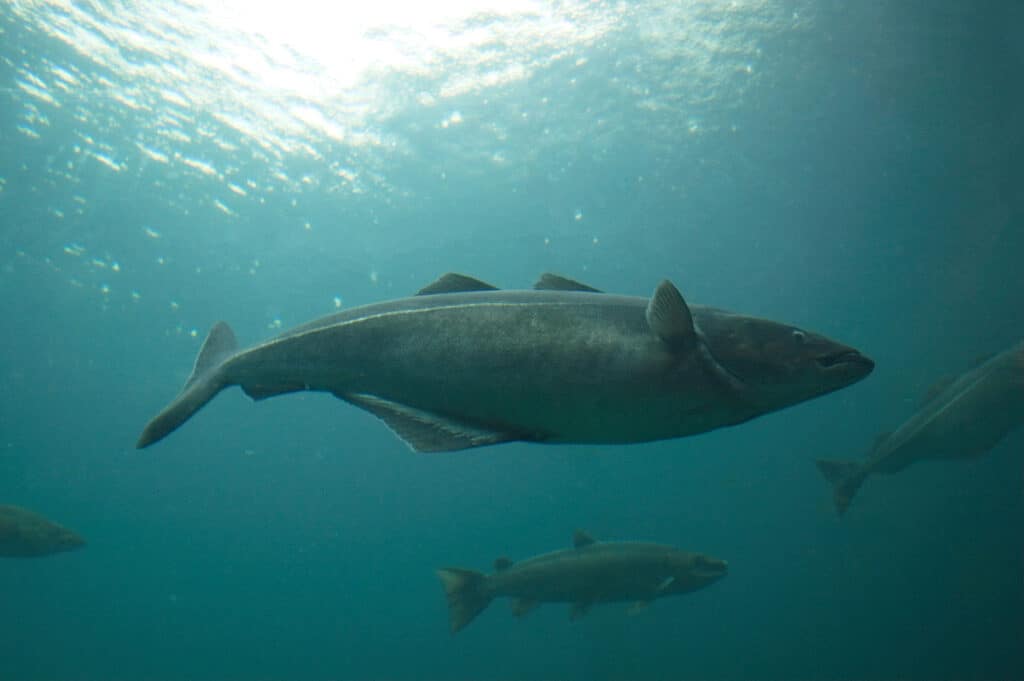
Summary and conclusion
The Norwegian Environmental Protection Association (NMF) is very negative about opening up the extraction of seabed minerals and instead asks Norway to take the initiative for an international ban.
Pushed towards the last and most vulnerable areas for mineral extraction is not an opportunity, but a signal that we as humans have lost control and failed in how we look after our resources and utilize those we already have in the best possible way. It is still not too late, but it is required that we conduct a thorough review of our total consumption of energy and resources. And, not least, it requires action and better solutions. Uncontrolled consumption, which we have today, will not be able to continue indefinitely, and will eventually have to stop by itself when everything collapses. We must by all means avoid putting ourselves in such a situation, and should rather strive to find better solutions to our existing problems, than create new ones with much greater consequences because we did not take the job and seize the opportunity while we had it . Our sea areas are vulnerable and must feed an ever-growing world population. In addition to issues such as overfishing, pollution etc, the sea areas are unable to handle yet another significant new source of environmental problems which will be the result of us allowing mining on the seabed. We are unable to do this on land without major environmental and pollution problems, so how are we going to manage this many hundreds or thousands of meters underwater and many kilometers from the nearest coast? This will never be able to be carried out in any proper way.
The precautionary principle must be the absolute and unabridged basis for all handling of the management of the sea areas and its resources. This is also the guiding principle behind it The UN's Sustainable Development Goals in its entirety, but also specifically Sub-goal 14 – Life in the sea. The sustainability goals are not something we can choose to ignore as it suits us, but are a signed and ratified work plan that binds the nations of the world, including Norway.
Norway is in a position where our choices will also have consequences for what other countries do. "Everyone" looks to Norway.
International moratorium on extraction
Instead of opening the way for an extraction of which we absolutely do not know the consequences, Norway should rather be the nation that held back and showed responsibility. The NMF will therefore propose that Norway as a nation take the initiative for an international moratorium that prohibits the extraction of seabed minerals within a given time horizon, at least until 2030.
NMF says a clear NO to the extraction of seabed minerals, and a yes to a Norwegian initiative for an international moratorium against mining on the seabed. The marine sea areas are far too valuable for us to risk carrying capacity and survival. It is now that we have the opportunity to make a responsible choice. The precautionary principle must apply.
- The Norwegian Environmental Protection Association sent today our consultation input in which we are strongly critical of the opening of mining operations on the seabed, and in which we instead ask Norway to take the initiative for an international ban.
- International moratorium on extraction
- The consultation report and impact assessments
- The investigation area affects the national park and nature reserve
- Norwegian shelf already charged
- Extraction of seabed minerals is absolutely the last resort
- Reuse of materials can also solve a pollution problem
- Better utilization of resources by utilizing minerals that have already been mined
- The need for minerals and metals
- Energy and minerals – two sides of the same coin
- The responsibility for safeguarding water quality also in our marine areas
- The sea is our most important food dish
- Summary and conclusion
- International moratorium on extraction
- Download:
Download:
- The Norwegian Environmental Protection Association's consultation statement (PDF)
- OED's Høringsside extracting seabed minerals





